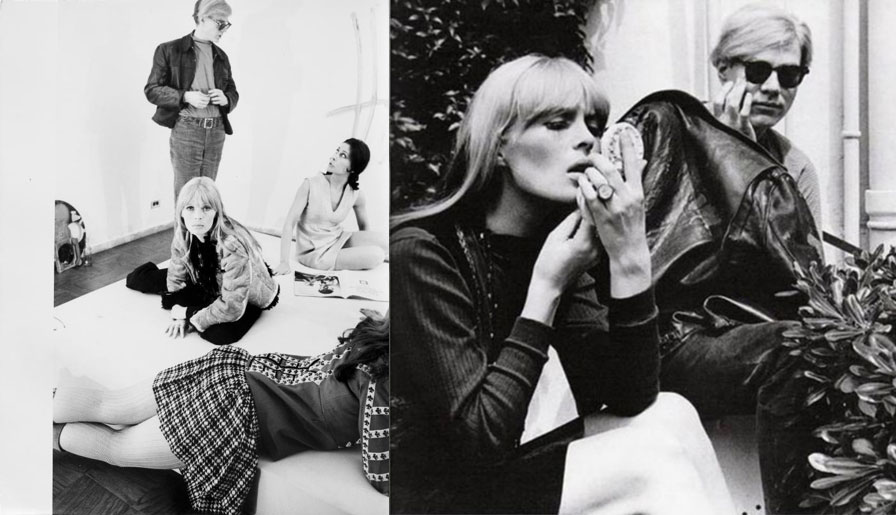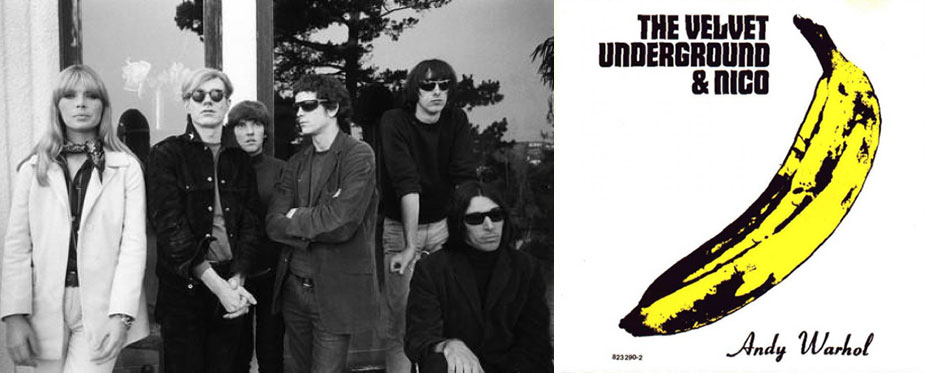Ryan Pham, September 1, 2016
Warhol Superstar Nico was born Christa Päffgen in Germany on October 19, 1938. After moving several times in her early life and dealing with the death of her father, Nico and her mother relocated to downtown Berlin. There, at age 13, she finished school and began selling lingerie at the German deluxe department store, KaDeWe, a job that would eventually change her life.
A couple years later, while working at a KaDeWe fashion show, she was discovered by photographer Herbert Tobias. Tobias is credited for giving her the name Nico after his ex-boyfriend Nikos Papatakis, a moniker she used for the rest of her life. At a tall five feet ten inches with chiseled features and porcelain skin, she dominated the fashion scene. Soon after meeting Tobias, she moved to Paris and began working for Vogue, Tempo, Vie Nuove, Mascotte Spettacolo, Camera, elle, and other fahion magazines. By age 17, she was contracted by Coco Chanel to promote their products, but she opted out and fled to New York.
“She took walks on the Kurfustendamn. She went window shopping. She had no friends, she went by herself. That’s where Tobias discovered her. He was Oestergaard’s photographer. That was the beginning. Then Paris Vogue saw her and gave her a job right away. Oestergaard lost her. When she went to Paris, she was only 16. She could move her body and act. That’s all she wanted to do. Her hands were like milk and glass. She never worked. Beautiful hands…”- Helma Wolff
New York proved to be the perfect environment for Nico to find herself artistically as a performer. In 1965, she met Rolling Stones guitarist Brian Jones and began professionally recording music. From there she began working with Andy Warhol and Paul Morrissey on their experimental films, including Chelsea Girls, The Closet, Sunset and Imitation of Christ. She became an instant Warhol Superstar and was a regular in The Factory scene.
After Warhol became The Velvet Underground’s manager, he proposed that the group take on Nico as a member. The group became the centerpiece of Warhol’s “Exploding Plastic Inevitable,” a multimedia event featuring music, light, film, and dance. Andy also helped to produce their first album and create their debut album cover. Unfortunately, though, they did not get along well and The Velvet Underground blamed Nico for causing delays at their shows and for veering off key when singing—which happened because she was partially deaf. They quickly parted ways and Nico went on to continue her career as a solo artist. Though the album was poorly received at the time of its release, The Velvet Underground & Nico (1967) went on to become a classic, ranking 13th on Rolling Stone’s Greatest Albums of All Time.
(Photo: The Velvet Underground & Nico with Andy Warhol 1967, The Velvet Underground & Nico album cover art by Andy Warhol)
After the release of six solo studio albums and a trove of live albums, Nico began leading a vagabond life floating from country to country, spending the last year of her life in Manchester, England. Reportedly, plagued by addiction most of her career, her dependency on drugs had diminished and her songwriting had increased in her final years of life. On July 17th 1988, while vacationing with her son, she had a freak bicycle accident; a cab driver found her on the side of a steep mountain and took her to four different hospitals before she was finally admitted. Misdiagnosed of simple exhaustion and heat stroke, Nico passed the following evening of a cerebral hemorrhage.
Nico left an inspiring legacy, influencing many musicians, including Siouxsie and the Banshees, Bauhaus, Elliott Smith, Patti Smith, Morrissey, Björk, Henry Rollins, Coil, Jocelyn Pook, Fabienne Shine (who covered “All Tomorrow’s Parties”), Dead Can Dance, Marcus Reeves, as well as numerous contemporary goth bands. In 2008, Two Nico tribute concerts took place in Europe to commemorate the 70th anniversary of Nico’s birth and the 20th anniversary of her death. Most recently, in 2012, Rooster Gallery in New York City presented an exhibit called Nico: New York City, featuring photographs by Jerry Schatzberg.
Advertisement, 1967
“She started at some point, um, having a real resentment over her good looks. She hated the fact that people thought she was beautiful. She thought this was some sort of disgrace to be beautiful… But in those days modeling was not artistic… you know, artistic was to be like Janis Joplin screaming your lungs out before you die of drug addiction… She [Nico] was so happy to be called ugly.” – Paul Morrissey





